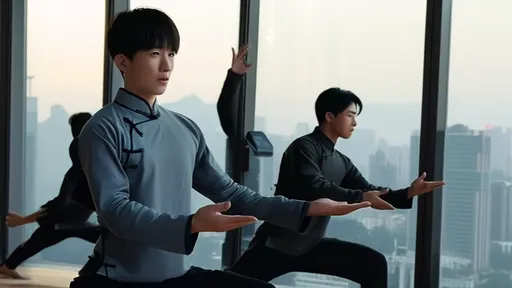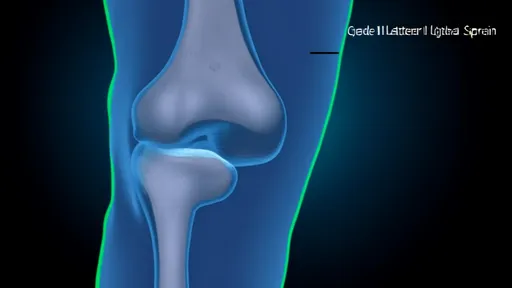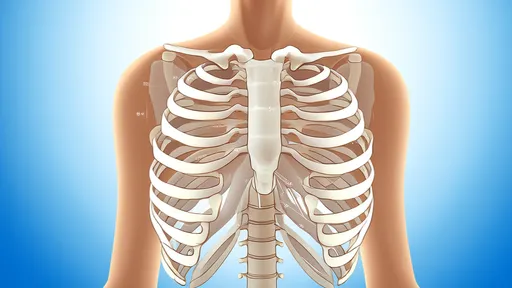Fitness gaming has taken the world by storm, and Nintendo's Ring Fit Adventure stands out as one of the most innovative entries in this genre. While many players enjoy the game at face value, there's a hidden layer of depth that few explore—the secret intensity settings. These undisclosed options can transform your workout, pushing you beyond the default limits. For those seeking a more challenging experience, unlocking these hidden features can be a game-changer.
Most players are familiar with the adjustable difficulty levels in Ring Fit Adventure, but what they might not realize is that the game's algorithm adapts in subtle ways based on your performance. The more consistently you play and the harder you push yourself, the more the game responds by tweaking the intensity behind the scenes. This isn't just about raising the rep count—it's about how the game measures your effort and gradually increases resistance in ways that aren't immediately obvious.
The hidden intensity mechanics work through a combination of factors. Your in-game avatar's responsiveness, the speed at which enemies attack, and even the duration of certain exercises can shift based on your performance history. Players who maintain perfect form during squats might find their character requiring deeper knee bends to register movements. Those who excel at cardio segments may notice the game introducing more complex combinations that test endurance in new ways.
What makes these hidden settings fascinating is how they mirror real-world fitness progression. Just as personal trainers adjust workouts based on a client's capabilities, Ring Fit Adventure's algorithm creates a personalized challenge curve. The game tracks metrics like completion speed, range of motion, and consistency between sessions to determine when you're ready for more demanding routines. This adaptive system ensures players continue seeing results without hitting frustrating plateaus.
Unlocking these higher intensity thresholds requires more than just selecting a higher difficulty number. The game rewards dedication—players who log consistent sessions over weeks will notice subtle changes in their workouts. Exercises that once felt manageable become more strenuous as the game introduces micro-adjustments to form requirements. These aren't announced as level-ups; they emerge organically through gameplay, creating a seamless progression system.
Nutrition and recovery play unexpected roles in accessing hidden intensity levels. The game's logging system tracks workout frequency, and pushing too hard without adequate rest can actually limit intensity unlocks. Just like professional athletes periodize their training, Ring Fit Adventure encourages balance. Players who follow the game's suggestions for rest days and hydration reminders often find their subsequent sessions feature more advanced variations of familiar exercises.
The psychological aspect of these hidden settings shouldn't be underestimated. By not overtly displaying every adjustment, the game prevents intimidation while still providing challenge. Many players report reaching points where they suddenly notice their workouts feel different—more demanding in ways they can't quite pinpoint. This mirrors the subtle progressions in traditional fitness, where small cumulative changes lead to significant improvements over time.
Advanced players have discovered techniques to accelerate intensity unlocks. Maintaining perfect form during warm-up routines seems to signal readiness for harder challenges. Combining smooth, controlled motions with consistent breathing patterns appears to trigger the game's algorithm to introduce advanced techniques sooner. Some speculate that the game's motion detection interprets these markers as indicators of an athlete prepared for greater challenges.
Interestingly, the hidden intensity system varies between exercise types. Strength-focused moves like overhead presses might scale differently than yoga-inspired poses. This specialization means players can't simply brute-force their way to higher intensities—they must demonstrate proficiency across multiple fitness domains. The balanced approach prevents overdevelopment in one area while neglecting others, much like well-designed cross-training programs.
The social elements of Ring Fit Adventure also influence intensity progression. Players who share progress with friends or participate in community challenges often report faster unlocks. While the exact mechanism remains unclear, the competitive and collaborative aspects seem to provide additional data points the game uses to calibrate difficulty. This creates a fascinating dynamic where both individual performance and social engagement contribute to workout customization.
Seasonal events and updates sometimes introduce temporary intensity modifiers. During special challenges, players might encounter exercise variations that don't appear in regular gameplay. Successfully completing these limited-time events can permanently expand the game's understanding of a player's capabilities, leading to new exercise combinations in future sessions. This keeps long-term players engaged while preventing workout routines from becoming stale.
For fitness enthusiasts tracking real-world progress alongside their in-game achievements, the hidden intensity system provides valuable insights. Noticing when the game begins demanding more can serve as an external validation of improving fitness levels. Many players report that these organic difficulty increases often align with moments when their physical capabilities have noticeably improved outside the game.
The developers have remained intentionally vague about these mechanics, likely to preserve the sense of discovery that makes progression feel personal. While some information has emerged through data mining and player experimentation, much of the system's complexity remains undocumented. This approach maintains an element of mystery that encourages players to focus on their fitness journey rather than gaming the system.
As fitness technology continues evolving, Ring Fit Adventure's hidden intensity system offers a glimpse at the future of personalized workouts. By combining game design principles with exercise science, Nintendo has created an adaptive experience that grows with its users. For players willing to commit to regular sessions, these undisclosed challenges provide a path to continuous improvement that standard workout routines often lack.
Ultimately, the hidden intensity settings transform Ring Fit Adventure from a simple exercise game into a sophisticated fitness companion. The subtle, player-specific adjustments create a tailored experience that maintains engagement over months and years. For those who've felt their progress stagnating, paying attention to these behind-the-scenes changes might reveal new dimensions to their workouts—and their fitness potential.
The world of fitness is constantly evolving, with new trends emerging from every corner of the globe. While some workouts stand the test of time, others are so peculiar they make you wonder - who thought this was a good idea? From goat yoga to face slapping workouts, humanity's quest for better health has spawned some truly unconventional practices that blur the line between genius and madness.
The fitness world is buzzing with excitement over the latest viral workout trend—Divine Beats Training 2.0. This high-energy program combines pulsating electronic dance music with scientifically optimized movement patterns, creating what enthusiasts call "the first workout that feels like a nightclub experience." Unlike traditional exercise routines, this system uses precisely timed musical drops and bass-heavy beats to trigger explosive physical responses from participants.
In an era where office workers spend increasingly long hours tethered to their desks, a peculiar fitness trend has emerged from Japan that turns mundane stationery into tools for wellness. The "Stationery Workout" movement, particularly its signature "Ruler Balance" technique, has gained surprising traction among white-collar professionals seeking discreet ways to stay active during marathon work sessions. This unconventional approach transforms everyday office supplies into instruments of physical conditioning, blending productivity with subtle exercise.
In the age of social media dominance, fitness influencers have created countless viral workout trends that promise quick results. However, many of these popular movements can cause serious injuries when performed incorrectly or excessively. Medical professionals and physical therapists are increasingly warning about the dangers lurking behind some deceptively simple-looking challenges.
Fitness gaming has taken the world by storm, and Nintendo's Ring Fit Adventure stands out as one of the most innovative entries in this genre. While many players enjoy the game at face value, there's a hidden layer of depth that few explore—the secret intensity settings. These undisclosed options can transform your workout, pushing you beyond the default limits. For those seeking a more challenging experience, unlocking these hidden features can be a game-changer.
The world of pet entertainment has taken a thrilling turn with the rise of obstacle course designs tailored specifically for feline athletes. Cat owners and enthusiasts are increasingly embracing the concept of creating dynamic, engaging, and challenging courses that cater to their pets' natural instincts. These obstacle courses, often referred to as "cat obstacle course" in certain communities, blend creativity with functionality to provide cats with both physical exercise and mental stimulation.
In today's fast-paced world where stress has become an inevitable part of daily life, people are constantly seeking unconventional yet effective methods to alleviate tension. One such surprising but increasingly popular technique involves the use of ordinary bubble wrap - that ubiquitous packaging material that most of us instinctively pop when it comes our way. What began as an unconscious fidgeting behavior has evolved into structured stress relief training programs harnessing the therapeutic potential of this simple material.
The ancient Chinese literary masterpiece Dream of the Red Chamber is not merely a tale of aristocratic decline—it is also a treasure trove of traditional wellness practices. Among its pages lie subtle references to health-preserving exercises, many of which were practiced by the elite women of the Jia household. Today, these centuries-old movements are being reinterpreted through a modern lens, offering urban dwellers an unexpected bridge between classical literature and contemporary self-care.
The growing popularity of energy drinks has sparked significant interest in their physiological effects, particularly on cardiovascular health. Recent studies utilizing electrocardiogram (ECG) monitoring have begun to unravel the complex relationship between these caffeine-laden beverages and heart function. As millions worldwide consume energy drinks for a quick boost, researchers are investigating whether these products may trigger subtle yet meaningful changes in cardiac rhythm.
Walking is often touted as one of the simplest and most effective forms of exercise, accessible to almost everyone regardless of fitness level. However, as the trend of hitting extreme step counts—such as 30,000 steps a day—gains popularity, concerns about joint wear and tear have emerged. While moderate walking is beneficial, pushing the body to such extremes may come at a cost, particularly for the knees, hips, and ankles. This raises an important question: how much is too much when it comes to daily steps?
The crisp morning air, the quiet streets, and the promise of a fresh start make dawn an irresistible time for runners. Yet beneath the serenity of sunrise jogs lies a hidden danger few anticipate – exercise-induced syncope, particularly when running in a fasted state. This phenomenon isn’t merely about "feeling lightheaded"; it’s a temporary loss of consciousness that can lead to catastrophic falls or accidents. As more people adopt fasting routines or squeeze workouts before breakfast, understanding why this happens and how to respond could mean the difference between a close call and a tragedy.
Ligamentous laxity caused by overstretching is a complex clinical condition that often requires advanced imaging for accurate diagnosis. Magnetic resonance imaging (MRI) has emerged as the gold standard for evaluating ligament integrity, providing unparalleled soft tissue contrast that allows clinicians to assess the degree of ligament injury and subsequent laxity. This imaging modality reveals not only the macroscopic tears but also subtle microstructural changes that occur when ligaments are stretched beyond their physiological limits.
For decades, the idea of converting fat into muscle—or vice versa—has been a topic of fascination in fitness and medical communities. While the concept is often oversimplified in popular media, the biological mechanisms behind this transformation are complex and deeply rooted in cellular metabolism. Understanding how the body regulates the interplay between adipose tissue and muscle mass requires delving into the biochemical pathways that govern energy storage and utilization.
The medical community has long grappled with the complexities of localized cryogenic burns, a unique injury pattern that occurs when skin and underlying tissues are exposed to extreme cold. Unlike thermal burns which follow more predictable pathways, cryogenic injuries present distinct clinical challenges due to their delayed presentation and progressive tissue damage. Recent multicenter studies have shed new light on the pathophysiology and optimal treatment approaches for these frostbite-like injuries caused by industrial accidents, medical cryotherapy mishaps, and improper handling of liquefied gases.
The medical community has long been fascinated by the intricate relationship between skeletal deformities and their underlying causes. Among these, costal arch deformities, particularly those involving the lower ribs, present a unique challenge for both diagnosis and treatment. Often referred to as "corset rib syndrome" or "lower rib cage deformity," this condition manifests as an abnormal inward curvature of the lower ribs, frequently accompanied by chronic pain and respiratory limitations. The condition's nomenclature stems from its historical association with tight-lacing corsets, though modern cases often arise from congenital factors or trauma.














